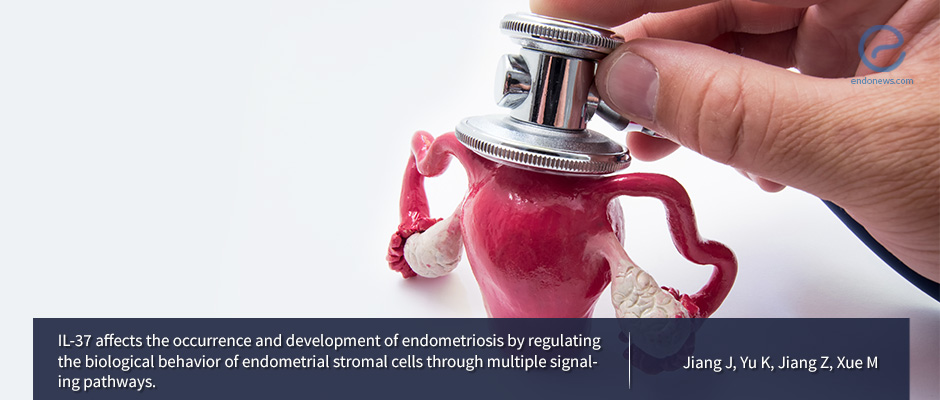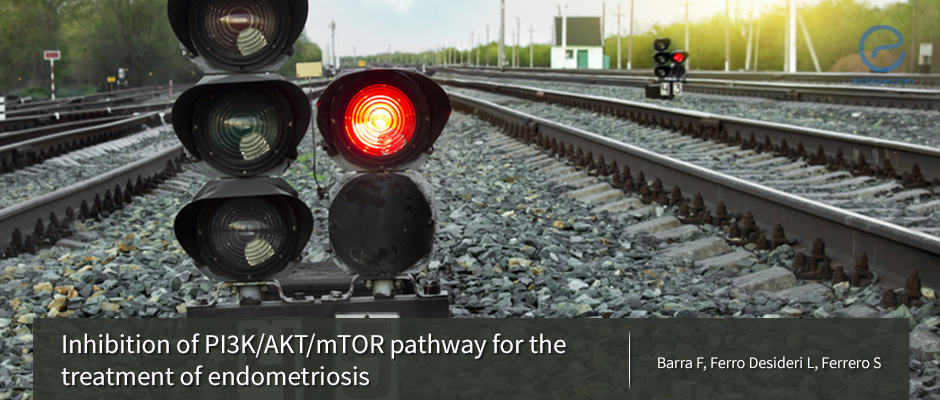Exploring the Impact of NNMT Enzyme on Endometriosis
Endometriosis is driven largely by inflammation and immune dysfunction. Despite extensive research, the optimal treatment for endometriosis remains uncertain. A better understanding of the disease's mechanisms could lead to improved therapies and a better quality of life for affected women.…
Key Points Lay SummaryThe Dysregulated IL-23/TH17 Axis in Endometriosis Pathophysiology
In a study published in the Journal of Immunology, Sisnett et al. explored the therapeutic potential of endometriosis with IL-23/TH17/IL-17 axis with structured into three main investigative components: human sample analysis, in vitro cell culture experiments, and an in vivo mouse model of endometriosis. The study…
Key Points Lay SummaryTET3: A new target for endometriosis treatment
Macrophages have a critical role in the development of endometriosis. They are involved in inflammation and tissue repair and are recruited to endometriotic lesions, where they contribute to chronic inflammation. In a recent commentary published in the Journal of Clinical…
Key Points Lay SummaryQuercetin and its effects on endometriosis
Endometriosis, as a disease characterized by chronic inflammation and fibrosis, could be a potential target for quercetin, a flavonoid found in various foods and botanicals, and a known senolytic agent with many effects including antioxidant, anti-inflammatory, and immune-modulatory properties. Studies…
Key Points Lay SummaryQuality of life analyses among women with endometriosis
Clinical factors that may affect the quality of life in women with endometriosis are mental health, sexual life, working capacity, and social relations. Symptom severity, especially dysmenorrhea, heavy periods, pelvic pain, and infertility complaints, are the most disturbing factors in…
Key Points Lay SummaryA synopsis of deep infiltrating endometriosis of the digestive system
The gastrointestinal tract is one of the most common locations of extrapelvic endometriosis. Its infiltrative counterpart exhibits more aggressive behavior and often needs to be distinguished from malignancies clinically. Yin et al. from Harbin, China reviewed the latest findings regarding…
Key Points Lay SummaryInterleukin-35 expression in B lymphocytes: A new potential biomarker?
Regulatory T-cells (Tregs) and B-cells (Bregs) play a crucial role in establishing tolerance to self-antigens and suppressing immune activity. Therefore, in endometriosis, they are requisite for the endometriotic cells to survive outside the uterus. They suppress immune activity by producing…
Key Points Lay SummaryThe effect of dienogest vs ethynyl estradiol/dienogest on quality of life in women with endometriosis
Women with endometriosis suffer from dysmenorrhea, dyspareunia, and chronic pelvic pain that diminishes the quality of their life. Both physical and mental components of quality of life have been affected by endometriosis-associated symptoms. There are several medical and surgical treatment…
Key Points Lay SummaryThe role of IL-33 and "T-regs" in lesion progression and fibrosis in endometriosis
It has been recognized that immune regulation likely plays a crucial role in endometriosis. Regulatory T cells (Tregs) are important immune regulators, and studies have linked Tregs to endometriosis development through signaling pathways involving TGF-β1 and PDGF. IL-33, an inflammatory…
Key Points Lay SummaryDeep Infiltrating Endometriosis and Adenomyosis have different genetic pathways
It is still not defined whether adenomyosis is also a deep endometriosis component or not. In the study conducted by Marshall et al, the researchers compared the gene expression patterns between deep infiltrating endometriosis (DIE) and adenomyosis uteri in order…
Key Points Lay SummaryThe relationship between p53 gene polymorphism and endometriosis
The p53 gene is a well-known tumor suppressor gene that plays a crucial role in preventing cancer by regulating cell growth and division. Recent studies suggest that the p53 gene may also be linked to endometriosis. To investigate the relationship…
Key Points Lay SummaryDo not underestimate the power of red blood cell evaluation in endometriosis
In an effort to develop an easy-to-use diagnostic marker, research has focused on the pro-inflammatory nature of endometriosis and the raised levels of inflammatory markers. The neutrophil-to-lymphocyte ratio (NLR) has emerged as one of these markers. Moreover, endometriosis has been…
Key Points Lay SummaryDo combination GnRH antagonists improve endometriosis-associated pain?
Endometriosis is a chronic inflammatory disease with a broad spectrum of pain symptoms such as dysmenorrhea, dyspareunia, and chronic pelvic pain. It has been understood in light of scientific evidence that endometriosis results in diminished quality of life in these…
Key Points Lay SummaryRhein usage in endometriosis: A potential new therapeutic agent
The invasive nature of endometriosis has prompted scientists to find preventative and curative methods. The progression and proliferation of endometriotic lesions are being studied extensively. As one of the agents used in Chinese herbal medicine for inflammatory disorders, rhein is…
Key Points Lay SummaryThe dilemma of autophagy and its role in endometriosis
Autophagy is a mechanism for cell survival under metabolic stress that involves the degradation and recycling of intracellular components. Multiple genes actively control this process. Among these, the initiation stage of autophagosome formation is regulated by the gene Beclin-1 and…
Key Points Lay SummaryIs it possible to reduce pain by diet in endometriosis?
Endometriosis-related pain is one of the most common symptoms of endometriosis that significantly affects the patient's quality of life. The peripheral and central sensitization, caused by chronic inflammation activation, may result in referred pain. The pain perception was shown to…
Key Points Lay SummaryA new potential therapeutic target in endometriosis: Galectin-3
The endometrial cells migrate and attach to the peritoneal surface according to the most widely accepted retrograde menstruation theory in endometriosis development. Given that only 10% of women have endometriosis, it is thought that some additional factors contribute to the…
Key Points Lay SummarySoluble CD90 : a potential serum biomarker in endometriosis
Dr. Bochev and colleagues from several medical centers in Bulgaria published their research on the role of a possible serum biomarker in diagnosing endometriosis in a recent issue of the journal named “Disease Markers”. The definitive diagnosis of endometriosis, an…
Key Points Lay SummaryPlanning surgery for recto-sigmoid endometriosis with 3D virtual models.
Efforts to reduce the high complication rate of rectosigmoid surgery in deeply infiltrated endometriosis are of great interest to gynecologists. 3D printing, currently used in various surgical specialties to support surgical planning and guide intraoperative procedures may be a way…
Key Points Lay SummaryThe underlying reason of implantation failure in women with endometriosis-associated infertility
Endometriosis is most frequently encountered in reproductive-aged women, with a prevalence of 10-15% in the general population. However, endometriosis is more frequently diagnosed in infertile women, with a prevalence of 25-40%. Although the exact mechanism explaining the association between endometriosis…
Key Points Lay SummaryCannabis use in the management of endometriosis-related pain during the COVID19 pandemic
Pain management in endometriosis has been challenging owing to many reasons. Since the pathways that cause pain in endometriosis have not been elucidated extensively, the medical and surgical management of pain remains to be symptomatic. Alternative pain management methods have…
Key Points Lay SummaryBlocking endometriosis through the inflammasomes
The medical treatment for endometriosis covers hormonal medications which prevent ovulation and fertility when on pills. In the study conducted by Murakami et al., a nonhormonal medication option has been evaluated for both blocking the endometriosis growth and also promoting…
Lay SummaryQuality of life assessment in women with endometrioma
Like most chronic diseases, endometriosis poses a significant risk of diminishing the quality of life in patients suffering from it, particularly with its most considerable symptom; chronic pelvic pain. Although it is known that endometriosis is more common in East…
Key Points Lay SummaryA novel in-vitro endometriosis model with KRAS and PIK3CA mutations
A plethora of research has been ongoing to illuminate the pathogenesis of endometriosis which is a multifactorial disease. These studies have proven the association between some mutated cancer driver genes and endometriosis, and links between certain cancers such as ovarian…
Key Points Lay SummaryLife quality improves after colorectal endometriosis operation even when the gastrointestinal symptoms persist
Colorectal endometriosis represents a catastrophic picture for patients, and the treatment mostly requires difficult operative techniques. The life quality improvement ratios are important before deciding on an operation. In the study conducted by Horace Roman et al, the life quality…
Key Points Lay SummaryEnvironmental factors play a role in the development of endometriosis
The proposed mechanisms underlying the development of endometriosis may be classified into three groups: in-situ theory, implantation theories, and induction theories. Genetic, hormonal, environmental, and lifestyle-related factors are also involved as no mechanism is solely responsible for endometriosis development. Although there are…
Key Points Lay Summary“Sirtuin-3” as a novel target in endometriosis pathogenesis
The energy that is needed for a normal cell function is produced in the mitochondria. While producing this energy, a complex and cyclical process occurs with many proteins and enzymes. Enzymes such as glutamate dehydrogenase and succinate dehydrogenase play important…
Key Points Lay SummaryThe endless burden: sexual dysfunction and endometriosis
The relationship between endometriosis and sexual health in women is one of the hottest topics in obstetrics and gynecology practice. There are some previous reports that investigated the effect of endometriosis on the loss of libido, arousal disorder, orgasmic dysfunction,…
Key Points Lay SummarySelected Blood Inflammatory Biomarkers May Help Identify Endometriosis
Levels of inflammatory biomarkers in the blood differ between women with endometriosis and those without the disease. Levels of some biomarkers also differ according to the stage of endometriosis. This is according to a new study by Polish scientists published…
Key Points Lay SummaryA Possible genetic target for endometriosis treatment
Mutations in the chromosome remodeling complex SWI/SNF subunit ARID1A were first identified in ovarian clear-cell carcinoma and ovarian endometrioid carcinoma, two endometriosis-associated epithelial ovarian cancer subtypes. ARID1A gene mutations are also observed in deep ovarian and deep infiltrating endometriosis, atypical endometrial…
Key Points Lay SummaryA pilot study for Endometriosis Potential biomarkers
Endometriosis is one of the most common female health disorders typically causing dysmenorrhea, dyspareunia, and pelvic pain, and may contribute to infertility. It is necessary to identify potential molecular biomarkers for diagnosis and regulatory factors behind the disease. The study…
Key Points Lay SummaryOsteopontin and Endometriosis
Although characterized as a benign disease, some properties of endometriosis mimic malignant tissues such as proliferation, cell invasion, and metastasis. Osteopontin, also called secreted phosphoprotein 1, is one of the important molecular targets in cancer progression and metastasis. Osteopontin has been…
Key Points Lay SummaryPsychometric properties of Endometriosis Health survey-Swedish version
Endometriosis is a chronic estrogen-dependent disease resulting in a broad spectrum of symptoms and signs including dysmenorrhea, dyspareunia, chronic pelvic pain, and infertility. Additionally, gastrointestinal and urinary systems may be affected by this disease. All of these clinical findings impair…
Key Points Lay SummaryColorectal Deep Endometriosis Resection and Potential Complications
A severe clinical form of endometriosis, deeply infiltrating endometriosis (DIE) is characterized by more aggressive endometriotic lesions commonly involving deeper pelvic or gastrointestinal organs. It causes significant quality of life impairment and morbidity and is increasingly associated with infertility. When…
Key Points Lay SummaryFallopian tubes and endometriosis
There are multiple theories to explain the pathogenesis of endometriosis, among which the most popular one is Sampson's retrograde menstruation theory. The role of endometrial stem cells/progenitors are widely studied to support the origin of ectopic lesions in recent decades.…
Key Points Lay SummaryHysterectomy as a choise of chronic pelvic pain relief in endometriotic women.
Sandstrom et al. from the Department of Obstetrics and Gynecology of Umea University, Sweden, found a significant and long-lasting reduction in pain symptoms after hysterectomy among women with confirmed endometriosis and recently published their results in "BJOG". The authors performed…
Key Points Lay SummaryBone morphogenetic protein and endometriosis
Endometriosis is a chronic disease characterized by the presence of endometrial glands and stroma outside the uterus, associated with several discomforts such as pelvic pain, menstrual disorders, and infertility. Although endometriosis is categorized as a benign lesion, the ectopic endometrial…
Key Points Lay SummaryThe effect of endometriosis on the quality of life
Endometriosis, the disease defined as the localization of endometrial glandular and stromal tissue outside the uterine cavity, can be diagnosed in the reproductive-aged women with an incidence of 7-15%. However, endometriosis is observed in women with chronic pelvic pain syndrome…
Key Points Lay SummaryMenstrual Blood Proteins for Endometriosis Diagnosis
Endometriosis is a gynecological disorder characterized by endometrial tissue outside the uterine cavity. The backflow of menstrual blood from the uterus through the fallopian tubes is thought to be the cause of endometrial tissue growing outside the uterine cavity when…
Key Points Lay SummaryThe Relationship Between Dyspareunia and Infertility in Endometriosis
Wahl et al. from the Center of Pelvic Pain and Endometriosis British Columbia Women's Hospital, Vancouver, Canada studied with endometriotic patients suffering from dyspareunia who were referred to their center and built a cross-sectional study to investigate the relations between…
Key Points Lay SummaryCycle-related gastrointestinal complaints in reproductive age young women
An analysis of 1-year data on 266 patients who presented to the Clinic and Polyclinic for Gynecology and Reproductive Medicine at Jena University Hospital to undergo surgery for endometriosis and its symptoms was performed by Nicolaous K. et al., a…
Key Points Lay SummaryCXCR4 or CXCR7 antagonists as novel therapies for endometriosis
Endometriosis is a common, estrogen-dependent chronic inflammatory disorder. It affects approximately 5-10% of reproductive-aged women and 20-50% of infertile women. Endometriosis also has a significant social and psychological impact on the lives of women. Despite such a significant burden, there…
Key Points Lay SummaryHow to design patient-centered interventions to meet the needs of endometriosis patients
The treatment of endometriosis is not perfect and necessitates the development of patient-oriented care initiatives. On this basis, patient-related transparent information should be the priority for researchers to find out a way for targeted interventions. Steele et al. from Australia and…
Key Points Lay SummaryA new target for the treatment of endometriosis?
Endometriosis affects around 10% of women in reproductive age, estimating more than 176 million women worldwide. Inflammation in the pelvic cavity is very common in endometriosis patients. Therefore, there are high concentrations of cytokines and immune cells in the peritoneal…
Key Points Lay SummaryNew Protein for Endometriosis Diagnosis
A protein called TIMP3 (tissue inhibitor of metalloproteinase-3) could be used for the diagnosis and prognosis (likely course) of endometriosis. The early diagnosis of endometriosis is of paramount importance because it can help to diagnosis and thus initiate the right…
Key Points Lay SummaryHow to predict complications for endometriosis surgery?
In a new study co-led by scientists at Sorbonne University, a nomogram is built to better inform patients about the risk of deep endometriosis surgery without bowel involvement. The findings have been published in the European Journal of Obstetrics &…
Key Points Lay SummaryPatients with Pelvic Pain Most Likely to Benefit from Endometriosis Surgery
Women who experience higher levels of pain are more likely to show improvement in their quality of life (QoL) following endometriosis surgery, according to a study published in The Journal of Minimally Invasive Gynecology. Chronic pelvic pain seems to be…
Key Points Lay SummaryNovel inhibitors of estrogen biosynthesis
Endometriosis is a chronic benign disease which is estrogen-dependent. Estradiol creates a positive feedback loop with the synthesis of pro-inflammatory mediators, which sustains further disease establishment and causes the pain symptoms. However, hormone therapies do not cure definitively endometriosis, because…
Key Points Lay SummaryCould a defect in phagocytosis cause endometriosis?
The macrophages are important immune cells in the peritoneal cavity because they function to remove aberrant cells or tissues by the process of phagocytosis. In endometriosis, there is an increased number of peritoneal macrophages and heightened production of inflammation molecules…
Key Points Lay SummaryThe Wnt/b-catenin signaling in endometriosis
Endometriosis is a very common gynecological disorder, which affects approximately 10% of reproductive-aged women, and is one of the most common reasons for infertility. The normal endometrium undergoes cyclical remodeling under control of sex hormones secreted by ovaries- estrogen and…
Key Points Lay SummaryThe reason for lower BMI and less body fat in women with endometriosis.
Zolbin et al. from the Department of Obstetrics and Gynecology of Yale School of Medicine, New Haven, USA, recently published the results of their prospective controlled research on adipocyte alterations in endometriosis, in the journal "Reproductive Biology and Endocrinology". Endometriosis can…
Key Points Lay SummaryPathophysiology of peritoneal endometriosis pain.
This article is an invited editorial by Ferrero S et.al. from IRCCS Ospedale Policlinico San Martino, Genoa, Italy, published in the Annals of Translational Medicine. The authors describe the pathophysiology and underlying mechanisms of pain in peritoneal endometriosis with reference to the…
Key Points Lay SummaryThe postoperative functional outcomes of deep infiltrating endometriosis
Rectosigmoid endometriosis is defined as the infiltration of the bowel wall with the endometrial-like glands and stroma, reaching at least the muscular layer. The most commonly involved sites are the rectum and sigmoid colon. For the management of deep infiltrating…
Key Points Lay SummaryThe coexistence deep infiltrating endometriosis and fibromyalgia
Endometriosis is defined as the localization of endometrial glandular and stromal cells outside the uterine cavity. The main symptoms of endometriosis which are dysmenorrhea, dyspareunia, and chronic pelvic pain impair the quality of life of these women. This disease may…
Key Points Lay SummaryPreoperative factors to predict unresponsiveness in women undergoing endometriosis surgery
Endometriosis is defined as the localization of endometrial glandular and stromal cells outside the uterine cavity. Despite extensive research, the optimal management of endometriosis still remains unclear. Several treatment options include analgesic medication, hormonal treatments, and surgical intervention. There is…
Key Points Lay SummaryGal-3 can be a pharmacological target in endometriosis treatment
Galectins are known to play a significant role in angiogenesis, which is a key event contributing to the development of many disease conditions, one of which is endometriosis. Past studies, upon examining several human endometriotic lesions, showed that Galectin-3 (Gal-3)…
Key Points Lay SummaryIs the mystery for progression of endometriosis hiding out in abnormally located endometrial cells?
This prospective study was conducted by Hapangama et al. in Research İnstute of the University of Liverpool, UK, and the results have recently published in the Journal of Human Reproduction. The authors hypothesized that abnormally located endometrial basalis-like (SSEA1/nSOX9+)cells could be contributing to…
Key Points Lay SummaryThe role of circulating microRNA's in Endometriosis
Endometriosis is an estrogen-dependent disorder. This disease affects approximately 10% of reproductive-aged women and 20% to 50% of infertile women. Steroidogenic factor 1 (SF-1) is an essential transcriptional regulator coordinately regulating multiple genes involved in estrogen biosynthesis. SF-1 is known…
Key Points Lay SummaryAutophagy, proteolysis and Endometriosis
Sui et al., a group of researchers from the Qiqihar Medical University and Qilu Hospital of Shandong University, recently published in Experimental and Therapeutic Medicine. The piece titled “Expression and significance of autophagy genes LC3, Beclin1 and MMP-2 in endometriosis”…
Key Points Lay SummaryIL-37 regulates ectopic endometrial stromal cells to prevent endometriosis
Endometriosis has been identified as a chronic inflammatory disease. It has been shown that in the plasma and peritoneal fluid, women with endometriosis exhibit aberrant numbers of immune cells and concentrations of cytokines and chemokines that promote a chronic inflammatory…
Key Points Lay SummaryPROPOFOL: a new combat for endometriosis?
Feng et al, from the Department of Gynecology Weifang Medical University Hospital, Shandong, China, recently published their prospective experimental research in the journal Experimental and Therapeutic Medicine. Propofol, a rapid and short-term anesthetic substance, recently has been shown to prevent cancer through inhibiting…
Key Points Lay SummaryInhibition of PI3K/AKT/mTOR pathway for the treatment of endometriosis.
Dr. Matsuzaki et al. (2018) published a paper entitled ‘In vitro and in vivo effects of MK2206 and chloroquine combination therapy on endometriosis’ showing that the efficacy of MK2206, an Akt inhibitor, in combination with chloroquine for inducing autophagy in…
Key Points Lay SummaryTherapeutic potential of ginseng based compound in preclinical models of endometriosis
Currently, the drug option for women with endometriosis mainly focus on reducing estrogens levels (e.g., progestins, androgens, gonadotropin-releasing hormone (GnRH) agonists, and aromatase inhibitors). However, these therapies can have low effectiveness with frequent recurrence and considerable side effects. Therefore, there…
Key Points Lay SummaryOxidative Stress and Endometriosis
Endometriosis is a disease characterized by ectopic endometrial tissue outside the endometrium and is associated with a background of a chronic inflammation. Recent studies have aimed to elucidate the inflammatory mediators involved in endometriotic lesions by studying immune cell interactions,…
Key Points Lay Summary3,6-DHF suppresses the invasive properties of endometrial stromal cells through the Notch signaling
Dr. Zhou group reported recently that 3,6-DHF can inhibit the development of EMT, migration, and invasion of endometrial stromal cells by inhibiting the Notch signaling pathway. Endometriosis is a condition in which the layer of tissue (glands and mesenchyme) that normally…
Key Points Lay SummaryAlternative Solutions: Neuromuscular Electrical Stimulation for Endometriosis Pain
Bi and Xie, researchers from The Yan’an People’s Hospital, recently published the results of their retrospective study titled “Effect of neuromuscular electrical stimulation for endometriosis-associated pain” in Medicine. The study hoped to elucidate the effects of using a complementary and…
Key Points Lay SummaryCatching Endometriosis Early
Li et al., a group primarily from Sun Yat-sen University in the People’s Republic of China, recently published an article titled “Endometrium metabolomic profiling reveals potential biomarkers for diagnosis of endometriosis at minimal-mild stages” in Reproductive Biology and Endocrinology. The…
Key Points Lay SummaryPotential Study: Can Omega-3 purified Fatty Acids Treat Endometriosis Pain?
Abokhrais et al. published a paper titled “A pilot randomized double-blind controlled trial of the efficacy of purified fatty acids for the treatment of women with endometriosis-associated pain (PurFECT): study protocol” in Pilot and Feasibility Studies. The aforementioned authors are…
Key Points Lay SummaryS100A6 May be a Promising Target for Endometriosis Treatments
Peng et al., a group primarily from the Zhejiang University Medical College, recently published a paper in Gynecological Endocrinology titled “Upregulation of S100A6 in patients with endometriosis and its role in ectopic endometrial stromal cells.” This paper delineates a study…
Key Points Lay SummaryEndometriosis From an Epigenetic Lens
Samadieh et al. from the Royan Institute for Reproductive Biomedicine, recently published an article in Reproductive Sciences titled “Epigenetic Dynamics of HOXA10 Gene in Infertile Women With Endometriosis.” In this paper, the researchers wanted to observe HOXA10 gene expression in…
Key Points Lay SummaryEFA Medical Conference 2017: "Ovarian Cancer" Presentation by Dr. Jeannine Villella
Dr. Jeannine Villella, the Chair of Gynecologic Oncology in the Department of OBGYN at Lenox Hill, presented at the 2017 EFA Medical Conference. Her presentation was titled “Ovarian Cancer, ” and she discussed the similarities, differences, and links between ovarian…
Key Points Lay SummaryHow to Improve the Psycho-Social Well Being in Endometriosis Patients?
Endometriosis and its various symptoms can negatively impact an individual’s psycho-social wellbeing. Additionally, current endometriosis treatments do not adequately alleviate the symptoms and improve a patient’s health-related quality of life (HRQOL). In their article titled “The association between experiences with…
Key Points Lay SummaryLaparoscopic Bowel Resection Can Be Beneficial Rectosigmoid Endometriosis
Riiskjær et al. recently published a paper titled “Pelvic Pain and Quality of Life Before and After Laparoscopic Bowel Resection for Rectosigmoid Endometriosis: A Prospective, Observational Study” in Diseases of the Colon & Rectum. This paper focuses on the effects…
Key Points Lay SummaryThe Potential Molecular Mechanisms that Drive Endometriosis Progression
Endometriosis is a mysterious disease in that the exact mechanism that causes the illness is still at large. Yang et al. recently published a paper in the European Review for Medical and Pharmacological Sciences that hopes to elucidate the molecular…
Key Points Lay SummaryThe Role of IL-35 in the Pathogenesis of Endometriosis
The molecular mechanism that drives endometriosis remains elusive to this day. Zhang et al believe that interleukin 35 (IL-35) plays a role in the pathogenesis of the disease. Their recent publication in Reproductive Sciences titled “Upregulation of Interleukin 35 in…
Key Points Lay SummaryImmune Response in Endometriosis and Regulatory T cells
The adaptive immune system is crucial for many diseases. Lymphocytes, including T cells, are particularly important in the adaptive immune system. Previous research suggested that defective immune response could play a role in endometriosis. The hypothesis proposes that the immune…
Key Points Lay SummaryT-Cell Dysfunction May Worsen Endometriosis
Researchers from the Kyoto Prefectural University of Medicine, Japan, have found that T regulatory lymphocytes (Treg) may be the reason for the formation of the chronic inflammatory environment involved in endometriosis, a study published in The Journal of Clinical Endocrinology &…
Key Points Lay SummaryTFF3 May Be Involved in Endometriosis Research Suggests
Levels of a protein called TFF3 are significantly increased in the peritoneal cavity (the abdominal space) of women with endometriosis, found a study published in the scientific journal Reproductive Sciences. This increase was in line with levels of other known…
Lay SummaryImmune substances in peritoneal fluid for endometriosis diagnosis and armamentarium
Cytokines are immune substances secreted by a broad range of cells within the body, including immune cells like the macrophages, B lymphocytes, T lymphocytes, mast cells, and non-immune cells such as the endothelial cells and fibroblasts. They are important in…
Key Points Lay Summary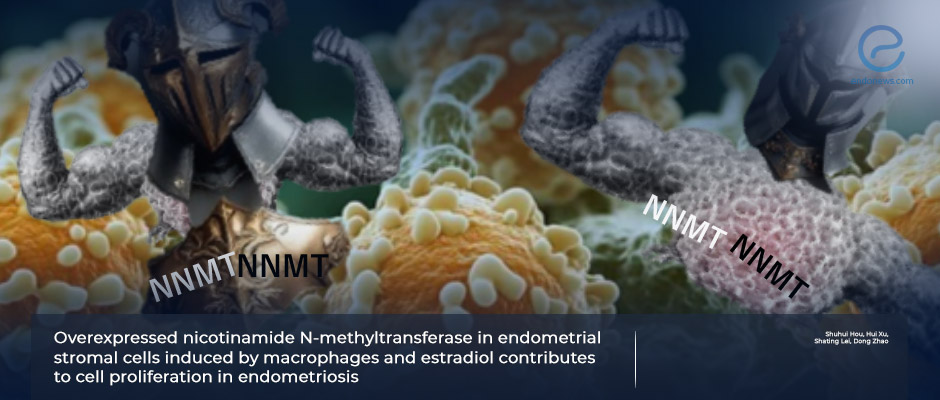
 By Hale Goksever Celik
By Hale Goksever Celik
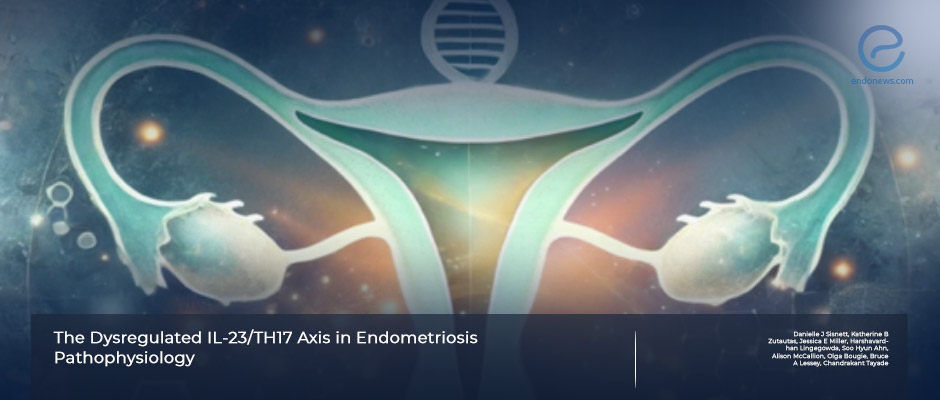
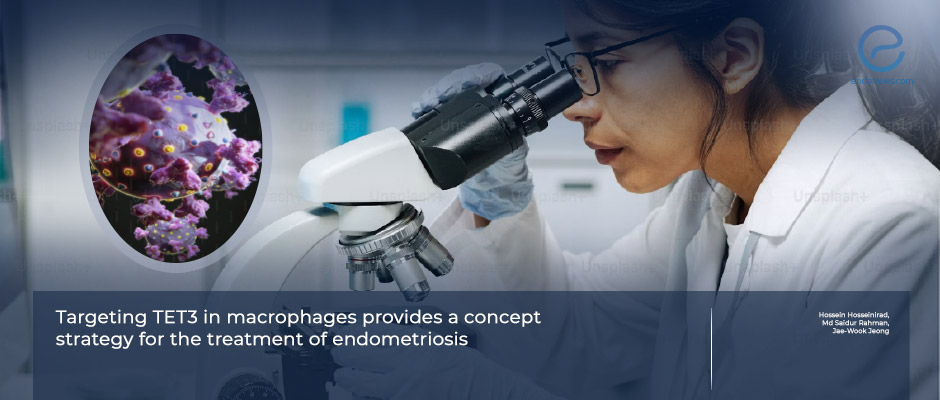
 By Eylül GÜN
By Eylül GÜN


 By Selma Oransay
By Selma Oransay
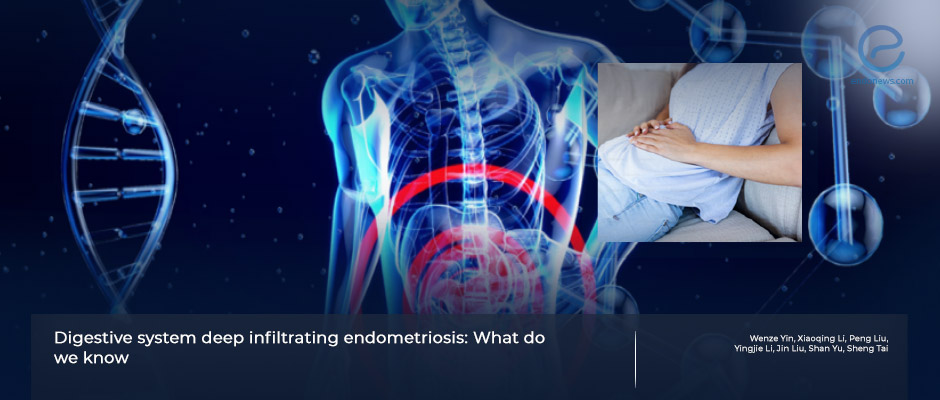




 By Bahar Yuksel
By Bahar Yuksel

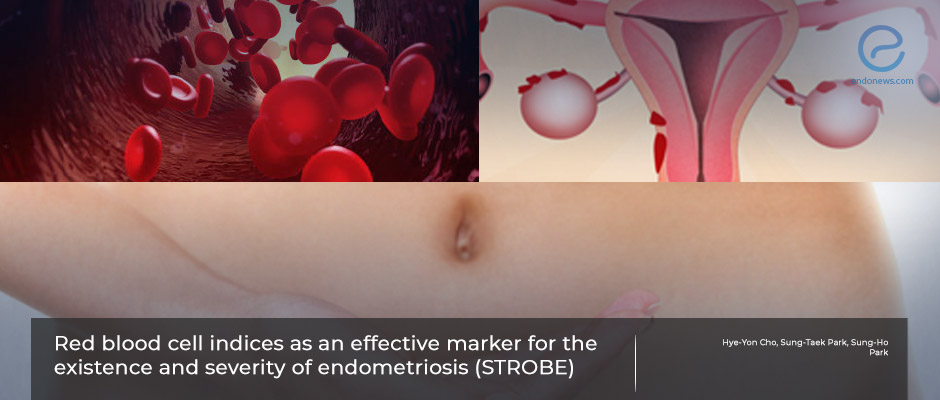






 By Nasuhi Engin Aydin
By Nasuhi Engin Aydin










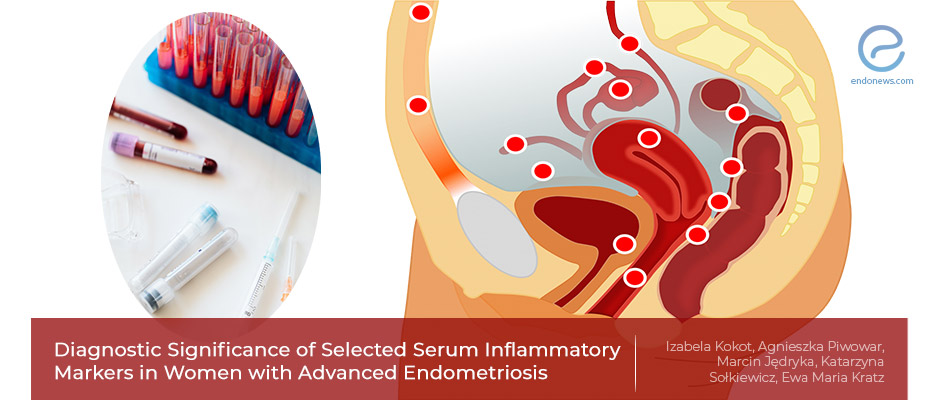
 By Özge Özkaya
By Özge Özkaya

 By Dr. Youngran Park
By Dr. Youngran Park

 By Ellen Tumimbang
By Ellen Tumimbang



 By Murat Osman
By Murat Osman



 By Nadire Duru
By Nadire Duru

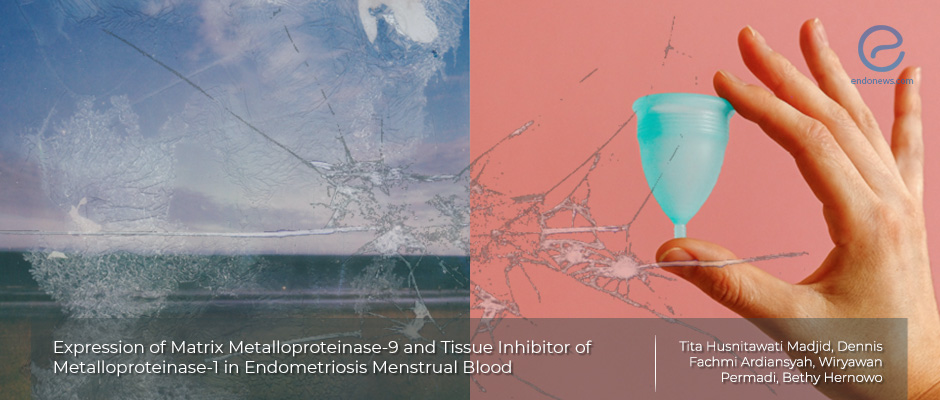

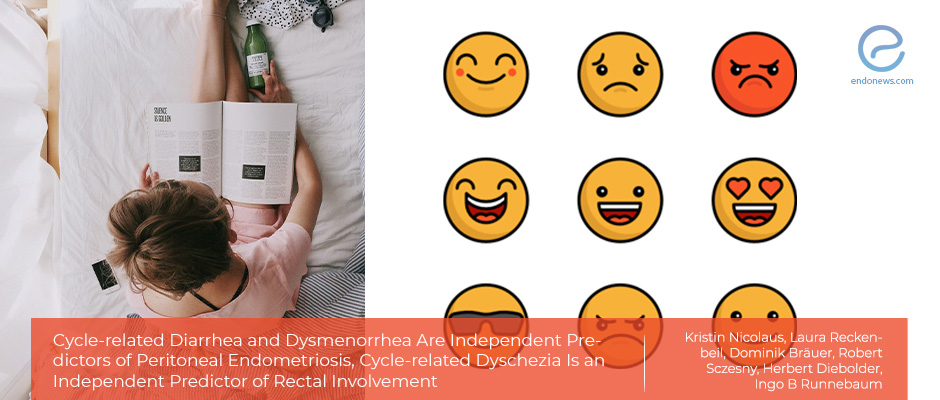
 By Timur Seckin
By Timur Seckin
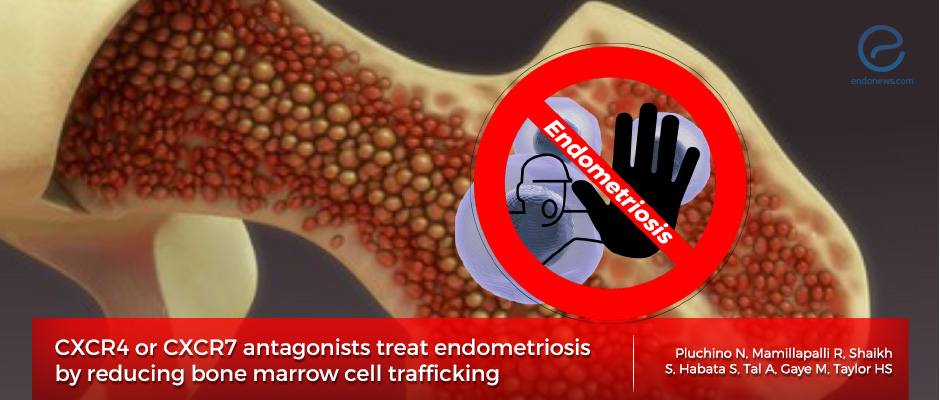
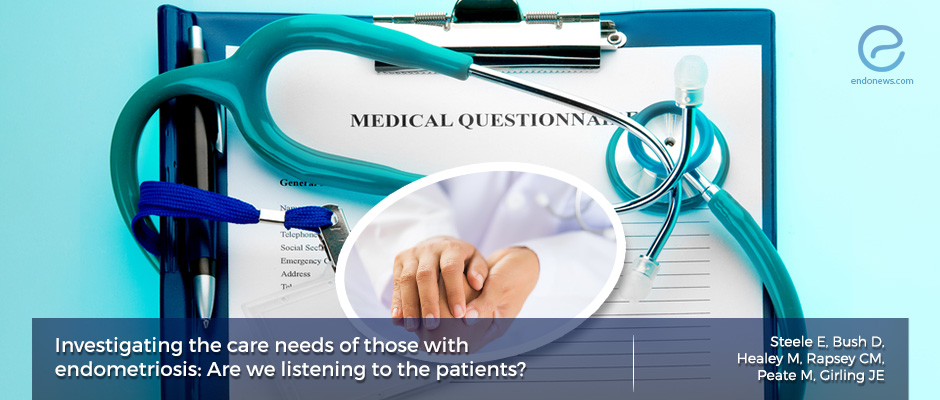
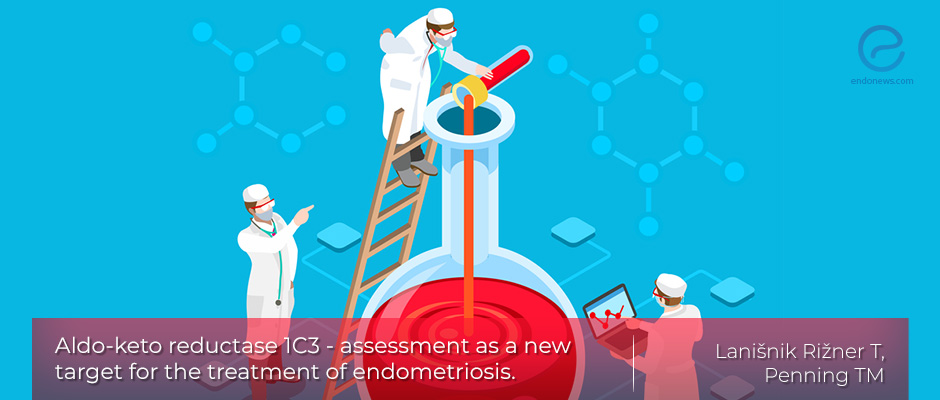

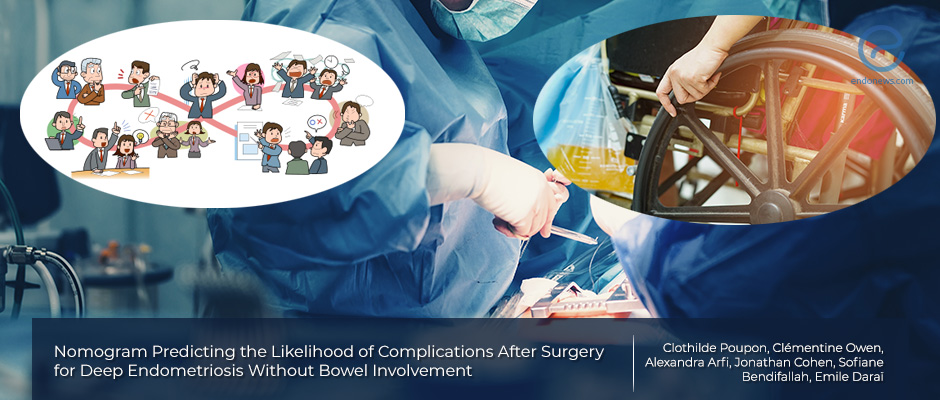



 By Yu Yu
By Yu Yu


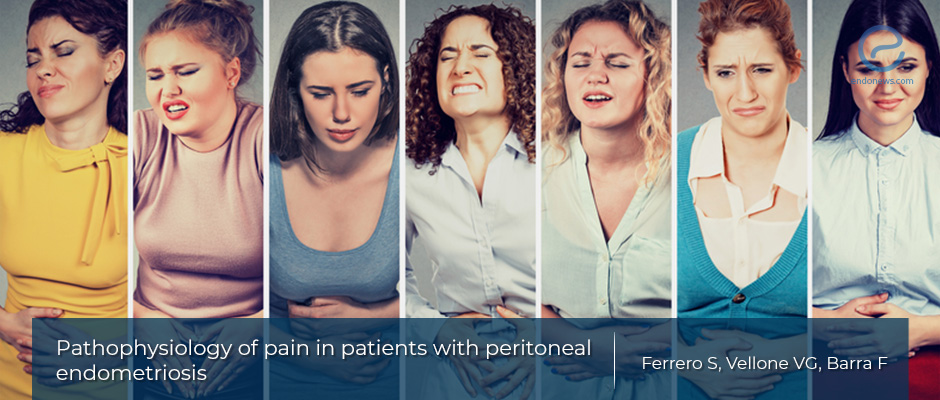
 By Serdar Balci
By Serdar Balci




 By Demet Candaş Green
By Demet Candaş Green



 By Kasthuri Nair
By Kasthuri Nair
